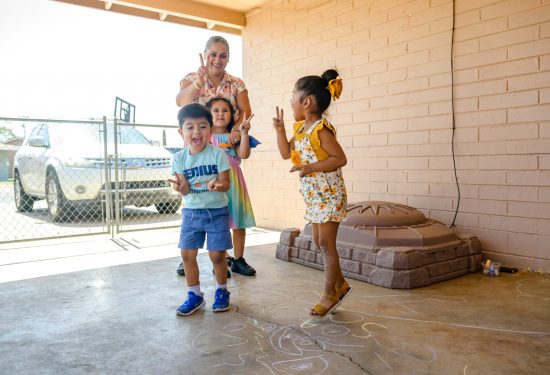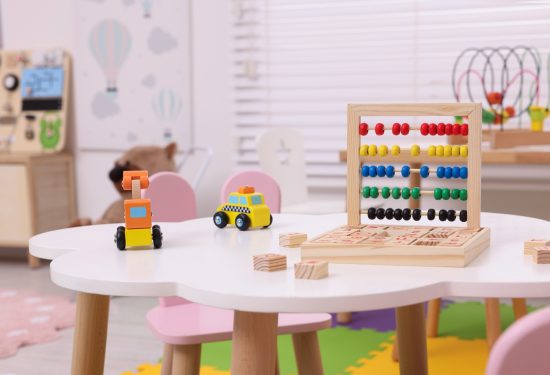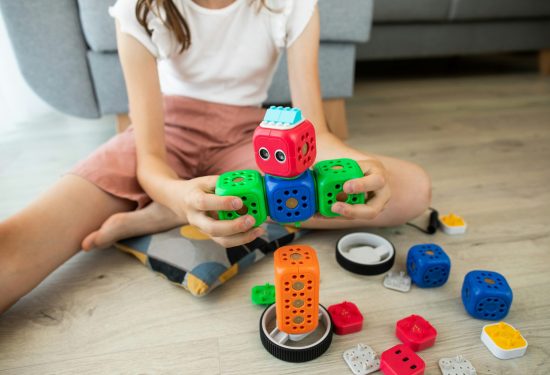This holiday season, many home-based child care providers will dish up an extra helping of love with celebratory treats and traditions. A menu of culture-rich holiday foods nurtures children’s sense of home, belonging, and community as well as their bodies.
In Dublin, California, where Janani Krishnakumaarr and her assistant care for more than a dozen preschoolers, the “festival season” stretches from Diwali (the Indian festival of lights which fell in October) to Valentine’s day–and her crew celebrates each holiday along the way. “Each holiday is a time for families, children, and the staff to pause and to connect,” she says.
This year she has served a mix of traditional Indian foods and familiar American treats, including garlic naan, spicy paneer kofta, and gingerbread cookies. Parents are often invited to holiday feasts and enjoy sampling new and favorite foods as much as the children. “This year I learned that one of my parents, who is Japanese, really loved the Paneer Kofta. We made a new personal connection talking about the food, and her family was very happy to take some home as well.”
Susan Randolf, a provider in Maricopa County, Arizona, shares diverse holiday traditions with her group of toddlers through books, songs, and games. Covid cleaning protocols have limited the amount of cooking she does with children, but she helps them understand the symbols of Kwanzaa–an annual celebration of African-American culture for seven days after Christmas – through food. Children create the Seven Candles for Kwanzaa with carrot candlesticks and raisin lights “glued” together with cream cheese. They learn about how corn is a symbol for the hopeful future children bring. And, she says, we really stress that the principles of Kwanzaa—unity, heritage, harvest—can be celebrated all throughout the year, and by people of all races.
BriAnne Moline, who operates Wild Wonders Early Learning in Missoula Montana, takes a health-conscious approach to holiday meals. “As the mother of neurodivergent kids, I believe food is a way of promoting healing from the inside.”
BriAnne provides organic, locally sourced, fresh foods for the dynamic dozen of 0-6 year olds in her program. She celebrated Thanksgiving with the kids in her care by preparing a wild turkey donated by one of her families, Idaho potatoes, and homemade sourdough bread stuffing loaded with carrots, onions, and celery. The toddlers in her program helped prepare dessert: mini pumpkin graham cracker crust pies made from pumpkins they grew in the program garden.
Children of all ages are sometimes reluctant to try new foods. “But we always tell them that we added an extra helping of love,” says BriAnne. “Then we gather at the table family style and everyone feels like they are part of our community sharing and eating together.”
BriAnne herself grew up with a lot of food insecurity, so it’s important to her that families can trust that their kids will eat healthy and tasty meals in her program. Before the pandemic, BriAnne qualified for food stamps and sometimes acquired ingredients from local food banks to supplement her child care program. Subsidies from the American Rescue Plan provided during the pandemic have boosted her income and made it easier to meet her state’s child care nutrition and portion regulations. At the end of the year, however, some pandemic relief will expire, and an omnibus spending bill has not yet passed in Congress. BriAnne worries that like more than 34 percent of child care workers around the country, she’ll need to look for other ways to create a healthy holiday spread.
This year as inflation has pushed the costs of a holiday meal up by more than 20 percent, BriAnne has been especially creative in filling the program’s holiday larder. She serves locally caught salmon at least once a month, and this year will add fresh venison donated by a local hunter. Montana is a hunting culture, explains BriAnne. “Talking about where our food comes from and including children in food preparation is a way of teaching kids responsibility for the environment, for their own healthy bodies, and for the ways their culture and community produces food.”
Children in BriAnne’s program will share those lessons with their family by preparing and packing gift baskets of cookies, breads, pumpkin seeds, and crafts to take home to their parents. Janani’s kids are baking too—mixing the dough, smelling the spices, and cutting out gingerbread people.
Along the way, BriAnne notes, “They are sharing the love too. In every culture, food traditions are a way of building community.”



